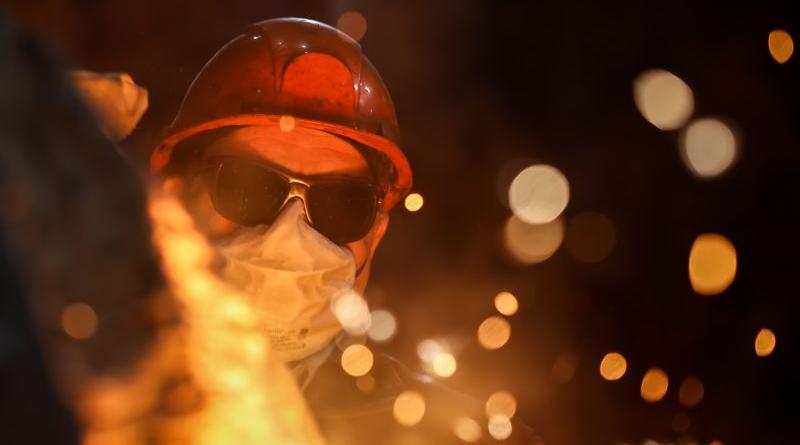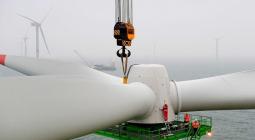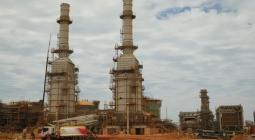After the energy storm, Europe needs strong industrial strategy

The EU must develop an industrial strategy tailored to address the challenges faced by energy-intensive industries, write Giovanni Sgaravatti, Simone Tagliapietra, and Georg Zachmann.
Giovanni Sgaravatti, Simone Tagliapietra and Georg Zachmann are researchers at Bruegel, an economic policy think tank based in Brussels.
As Russia launched its brutal invasion of Ukraine last year, some European industrialists warned that an eventual interruption of Russian gas supplies to Europe would have caused the most significant economic crisis since World War II.
Today, after Russia reduced its flows to the EU by more than 80%, we can say with confidence that the course of events turned out to be very different. In 2022, the European industry was resilient beyond expectations to the energy storm, with both employment and output increasing above 2021’s levels.
This is good news. However, the closure of energy-intensive factories in sectors such as basic metals, chemicals, non-metallic minerals, and the paper industry should not be overlooked. Given their high electricity and gas consumption, energy costs significantly affect these industries, unlike less energy-intensive manufacturing sectors.
As the energy price gap between Europe and other parts of the world – such as the United States – is expected to remain wide for an extended period as a result of the new European energy equilibrium, the EU must develop an industrial strategy tailored to address the challenges faced by these energy-intensive industries.
The recent German Economy Minister’s proposal – reimbursing energy-intensive companies for electricity prices above 6 euro cents per kilowatt-hour – resonated well in Germany. However, bridging the high-energy period with subsidies is only one of the possible policy options and probably the least strategic one.
Two crucial questions must be addressed when designing an industrial policy for these industries. Firstly, should specific energy-intensive segments of the value chain be permanently outsourced? Secondly, how can industrial energy prices be reduced to ensure the competitiveness of energy-intensive production stages within the EU?
These questions are the foundation for policymakers to navigate the current crisis and devise an effective strategy. In a new Bruegel paper, we have outlined the three strategic options available to policymakers.
The first is defending the industry in its current form by bridging the high-cost period with subsidies until cheaper energy sources become available to import. This strategy offers the major advantage of preventing potentially irreversible large-scale relocations of energy-intensive industries abroad, thereby incentivising them to remain within the EU.
However, for this strategy to be successful, the EU must maintain a comparative advantage in these industries, which relies on the timely reduction of wholesale energy prices.
Moreover, this strategy implies substantial fiscal cost; it poses a significant risk of fragmentation to the EU single market and risks deteriorating the multilateral trade system that the EU championed in the past. Merely providing subsidies to the current industrial players would miss the opportunity presented by this crisis to reassess the EU’s industrial model, and it would inadvertently impose higher energy prices and lower energy consumption on all non-supported sectors.
The second policy option involves transforming the energy-intensive industry in Europe by leveraging the crisis to accelerate the green transition. This can be achieved by embracing clean technologies and prioritising domestic clean energy production. In this scenario, policymakers should encourage change by providing conditional support for implementing innovative clean technologies and expanding clean electricity production.
However, this strategy has a high cost. Being an early adopter of large-scale deployment of new technologies to decarbonise energy-intensive sectors will likely require substantial public support, with no guarantee to decrease the industry’s cost competitiveness disadvantage. Policy should focus on helping domestic sectors to develop lasting comparative advantage and not only pay the learning curve for other regions of the world to capitalise on later.
The third policy strategy entails facilitating EU companies to import more energy-intensive intermediary products. While this approach may seem contradictory to the recent emphasis on shortening value chains and promoting domestic production targets, it offers the advantage of enabling a market-based redistribution of economic activity away from energy-intensive commodities and towards higher-value segments of the industrial value chain. This strategy could create fiscal space for governments and lead to cheaper energy for other industrial sectors.
However, this strategy has drawbacks. There is a risk of job losses, factory shutdowns, and import security concerns. Finally, carbon leakage must also be addressed, where the offshoring of energy-intensive activities could result in increased carbon emissions outside the EU.
The energy crisis is an external shock that governments should take as an impetus to rethink a traditionally rigid European industrial structure by putting at its core products in which the EU has a comparative advantage and fostering the green transition. Thereby we see a clear role for European coordination on corresponding national policies as otherwise, an escalating subsidies race could leave everybody worse off.
A mix of the three strategies is likely the best approach, but the weighting assigned to each strategy is crucial, and policymakers will have a decisive role in setting the policy mix right.
Subsidising existing energy-intensive industries should be done only in justified cases while deciding which energy-intensive products could be left to international market forces and which decarbonisation investments should be supported in Europe, given accompanying an ordered transition towards a new steady state combining industrial competitiveness and environmental sustainability.
cover photo:The energy crisis is an external shock that governments should take as an impetus to rethink a traditionally rigid European industrial structure, write Giovanni Sgaravatti, Simone Tagliapietra, and Georg Zachmann. [Anelo / Shutterstock]





